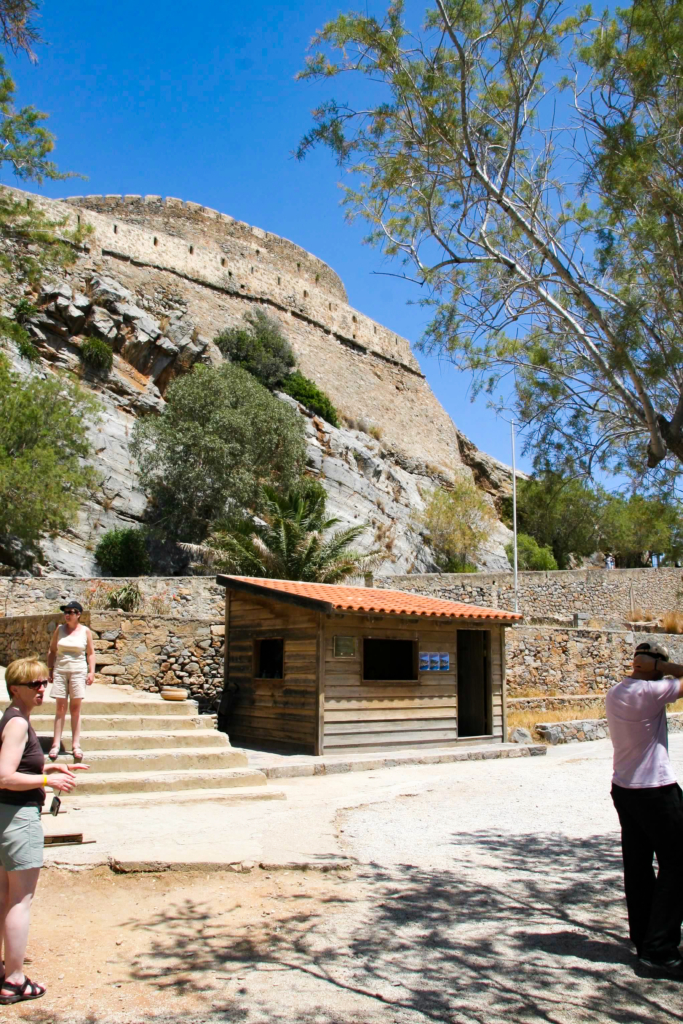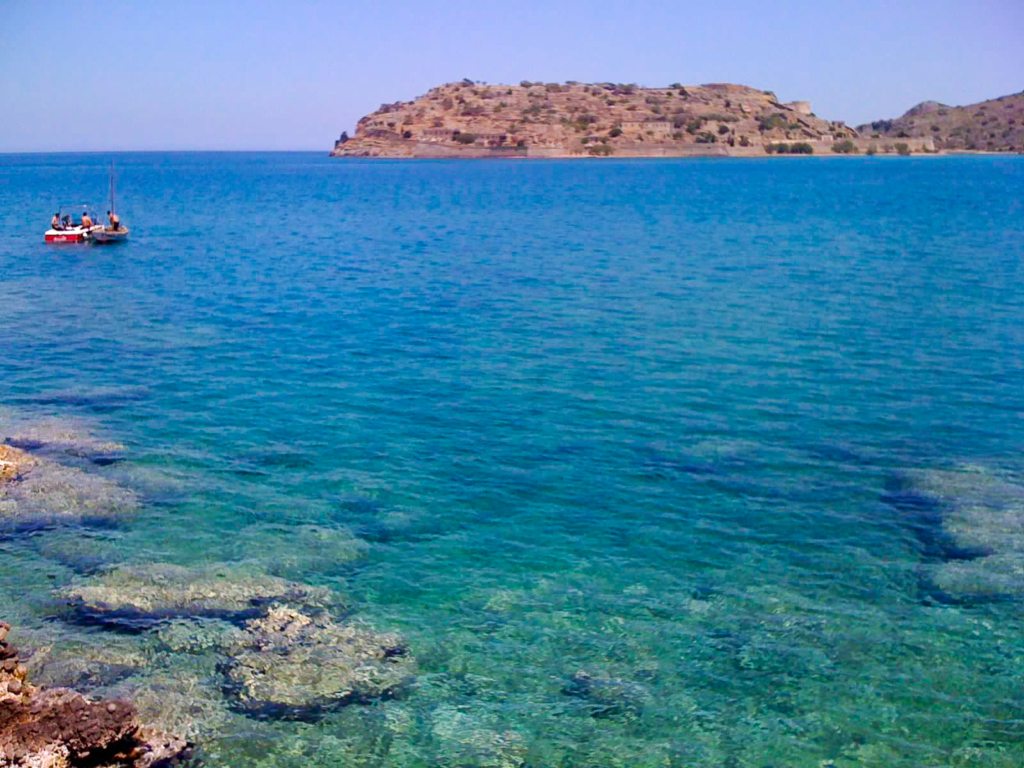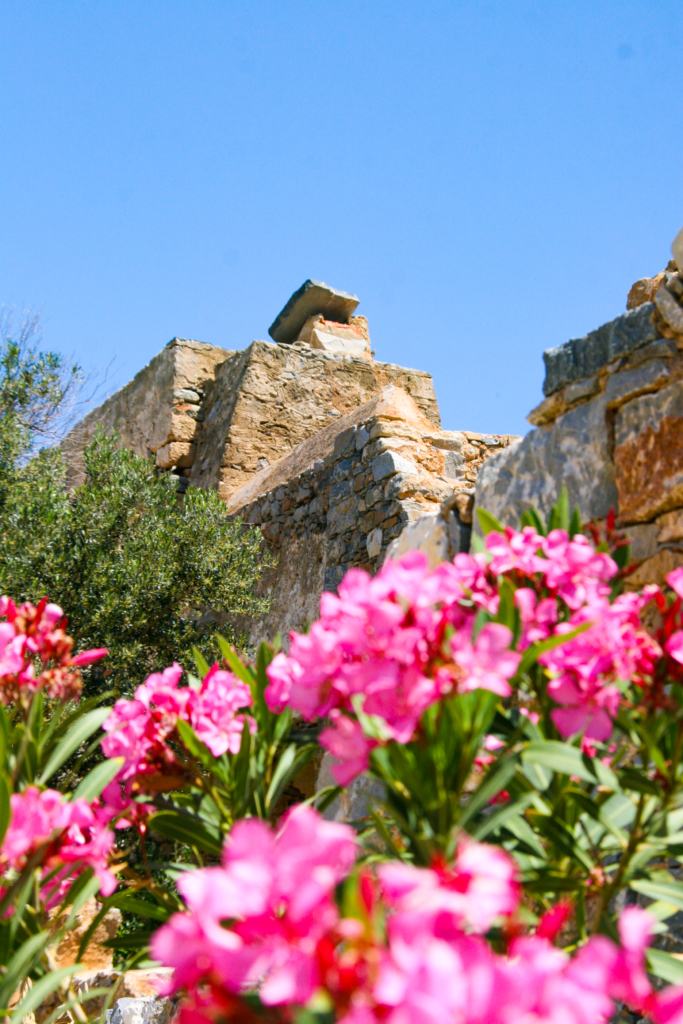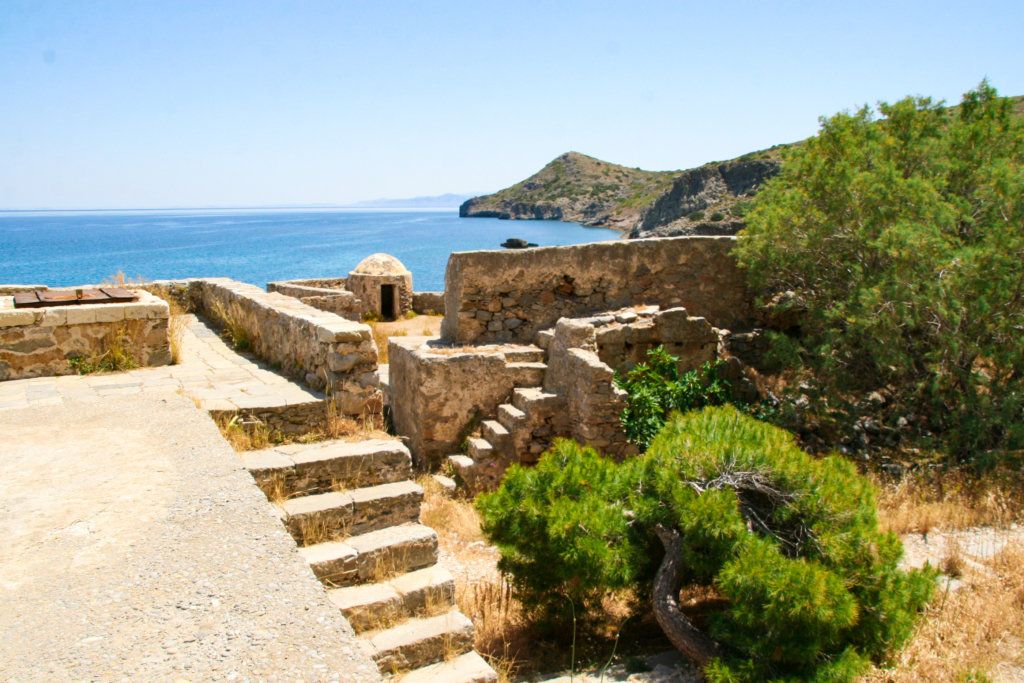During our 13-Day trip to Athens, Rhodes, Crete, and Istanbul we stayed at Villa Mavrikiano in Elounda on the island of Crete. The advantage of our location was its proximity to the village of Plaka, including its marina, perched along the shores of the deeply turquoise waters of the Gulf of Mirabello in the Aegean Sea.
Spinalunga island, a short boat trip from Plaka marina, was a medieval fortress for the Venetians and Ottomans. After eviction in 1904, the Cretans converted the island into a leper colony where, at its peak, it was home to 400 deserted individuals.
As the gentle breeze blew our small vessel towards Spinalunga we were struck with reverential awe. We were making the same journey across the sparkling turquoise waters as the unfortunate individuals who had been sentenced to a lifetime on this arid, rocky island. Inhabitants were shunned by family and even their medical providers for having leprosy, a disease causing disfiguring skin sores and debilitating nerve damage.
Prior to being deported to Spinalunga, individuals who received this dire diagnosis had all of their belongings, citizenship, and identities revoked. Upon arrival, the lepers departed the boat transport onto the island through a specific arched opening, Dante’s Gate, where they were registered. Food supplies delivered from the Plaka Marina to the island of Crete were delivered into the open air port, far removed from Dante’s Gate which was where we disembarked to climb the stone stairs into the village.
As we wandered down the narrow ancient roadways between the remains of Venetian and Turkish structures you couldn’t help but to feel the presence of the people who suddenly found themselves abandoned to this rock outcropping within sight of Plaka and its village life. The first 30-years of the island’s history was focused on subsistence with the residents struggling to get enough to eat.
In the 1930s the Brotherhood of the Sick of Spinalonga was created to improve the living conditions on the island, including extending the right to marry, operate businesses, and even allow concerts by artistically inclined residents. In addition, the colony residents were granted permission to dynamite part of the medieval fortress wall to clear a path around the island for leisurely walks.


The Walls of Spinlonga
The island is silent and beautifully haunted with an abandoned commercial street filled with a strip of shops, a cafe, and even a school that were once operated by island residents. Nearby, you will find the incinerator that was used to burn the infected clothing of the residents.
While successful treatment was discovered in the 1940s, residents continued to be left untreated up until the colony was shut down in 1957. Upon its closure, the Crete government destroyed related documentation in an attempt to eliminate the existence of Spinalunga. This silence was compounded by the surviving lepers who refused to talk about their experiences.
Victoria Hislop’s book, The Island, painted a charming portrait of life in the colony which attracted the attention of tourists and has prompted the Crete government to preserve the island. It is a deeply moving experience that can be further enjoyed by dining at Taverna Giorgos-Giovanni in Plaka whose outdoor dining tables look out onto Spinalunga while dining on freshly caught rock lobster.
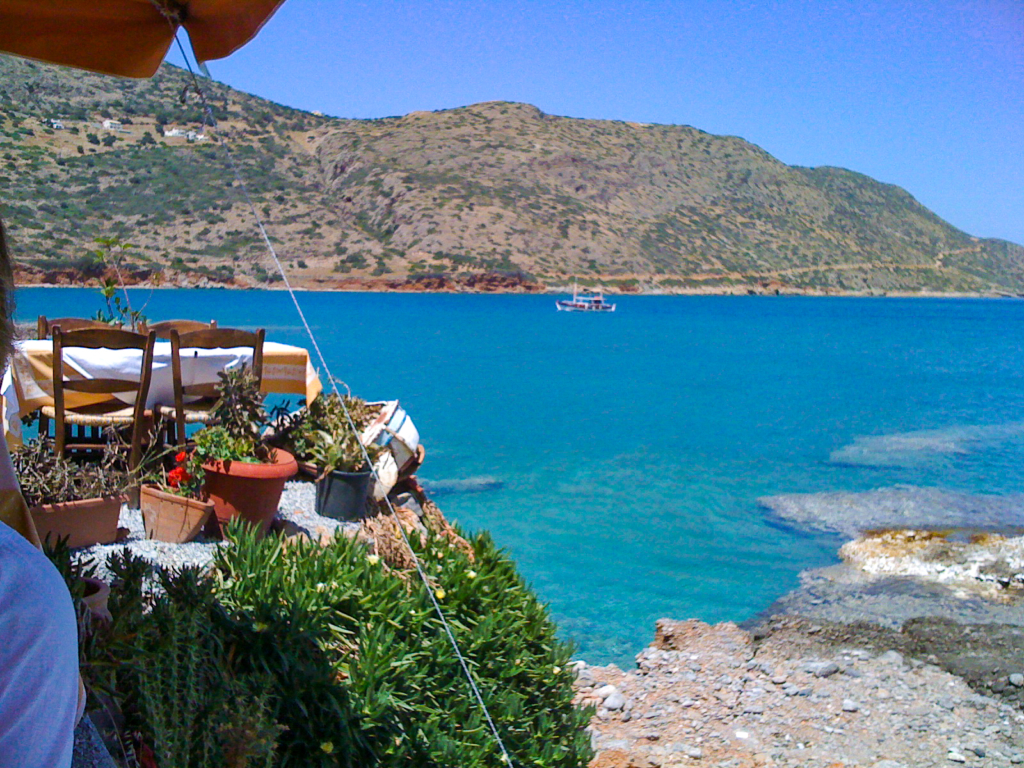
Mary Beth I have a passion for creating and experiencing unforgettable moments and sharing those with others. I hope that this story has helped you experience one of those moments.
